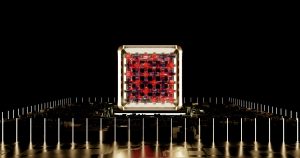Neuralink Meets Mobility: Brain-Controlled Vehicle Interfaces
Welcome to the future of transportation! Imagine being able to control a vehicle with nothing but your thoughts and intentions. This might sound like a scene from a science fiction movie, but with the recent developments in neural technology and mobility, it might soon become a reality. In this article, we will explore the exciting intersection of Neuralink and mobility, specifically brain-controlled vehicle interfaces. Get ready to dive into a mind-blowing topic that could change the way we think about transportation forever.
The Rise of Neuralink
Neuralink, founded by Tesla and SpaceX CEO Elon Musk, is a neurotechnology company that aims to merge the human brain with artificial intelligence (AI). The company’s ultimate goal is to enhance human capabilities and potentially solve neurological disorders by creating a brain-computer interface (BCI). Neuralink’s groundbreaking technology involves implanting tiny electrodes into the brain to record and stimulate neural activity.
This bold and ambitious project has made headlines since its inception in 2016. In 2019, Neuralink demonstrated its progress by showcasing a pig fitted with a Neuralink chip, demonstrating real-time data transmission from the pig’s brain. The company is currently working on human trials and plans to eventually offer its technology to the general public.
Bringing Neuralink to Mobility
Neuralink’s vision goes beyond just enhancing human capabilities; it also aims to revolutionize mobility. The company believes that by creating a direct link between the brain and technology, we can eliminate the limitations of traditional input devices, such as keyboards and controllers. This idea can radically transform the way we interact with vehicles, allowing us to control them with our minds.
The Current State of Brain-Controlled Vehicles
While the idea of brain-controlled vehicles may sound like a distant dream, some companies have already made significant progress in this field. In 2017, Nissan revealed its research on brain-machine interfaces that allow drivers to control their cars with their thoughts. This technology uses Brain-to-Vehicle (B2V) technology, where a driver’s brain activity is analyzed and interpreted to predict their intended actions, such as accelerating or braking.
Ford has also been working on a similar project called the “MindRider,” a bike helmet equipped with EEG sensors that allow the rider to control the bike’s speed with their thoughts. This technology is still in its early stages, but it holds immense potential for the future of mobility.
The Advantages of Brain-Controlled Vehicle Interfaces
The integration of Neuralink’s technology in vehicles can offer several benefits. First and foremost, it can significantly increase safety as it eliminates the need for physical input, reducing distractions and reaction time. This technology can also be beneficial for people with disabilities, allowing them to operate a vehicle independently.
Moreover, brain-controlled interfaces can enhance the overall driving experience by offering a more intuitive and natural way of controlling a vehicle. It can also provide a seamless and personalized driving experience, adjusting to the driver’s mood and preferences.
The Potential Challenges
While the idea of controlling a vehicle with our minds seems fascinating, there are several challenges that need to be addressed. One of the significant concerns is the safety and reliability of brain-controlled interfaces. A slight malfunction in the technology can have severe consequences, making thorough testing and regulations crucial.
Another challenge is the ethical implications of merging human brains with technology. It raises questions about privacy, autonomy, and the potential misuse of this technology. As with any groundbreaking technology, it is crucial to have ethical considerations and regulations in place to ensure responsible and beneficial use.
Conclusion
The ability to control a vehicle with our minds might have seemed like a far-fetched idea a few decades ago, but with recent advancements in neural technology, it might soon become a reality. Neuralink’s ambitious project aims to merge the human brain with AI and revolutionize not only human capabilities but also mobility. While there are challenges and ethical concerns that need to be addressed, the potential benefits of brain-controlled vehicle interfaces cannot be ignored. The future of transportation is exciting, and we can’t wait to see where this technology takes us.











